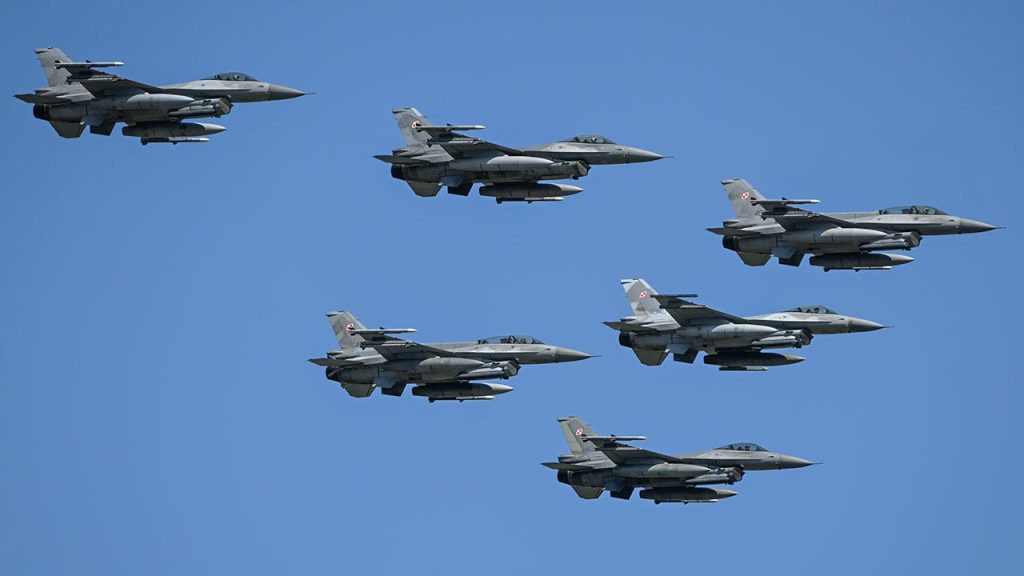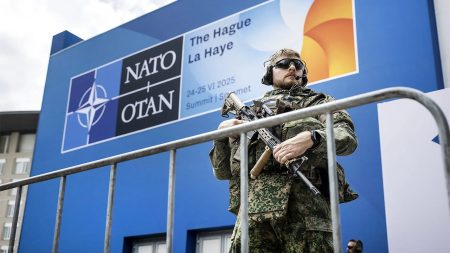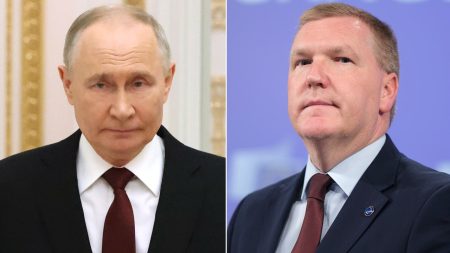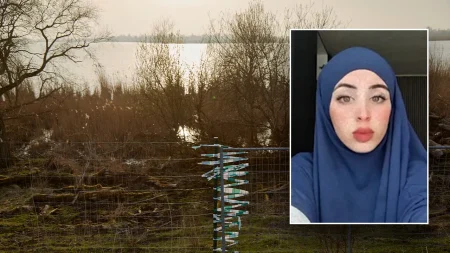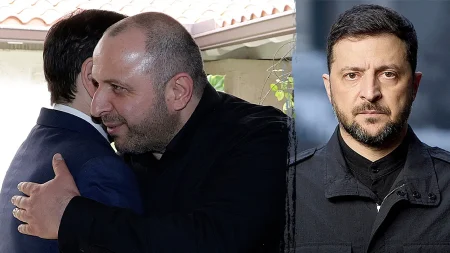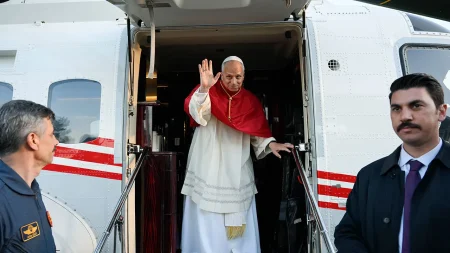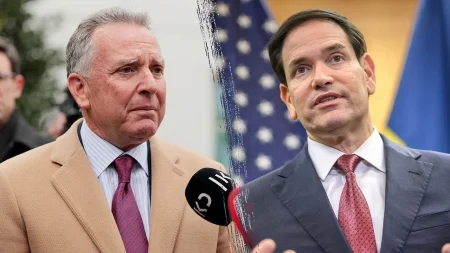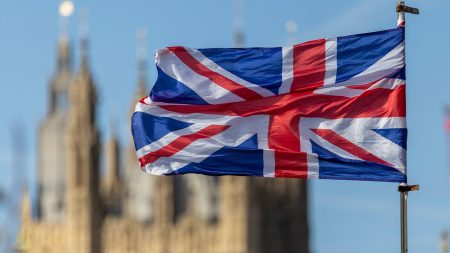Russia’s Drone Incursion into Poland Raises NATO-Russia Tensions
In a concerning escalation of regional tensions, Russia launched approximately two dozen drones into Polish airspace last Wednesday, marking a significant moment in NATO-Russia relations since the Cold War. This incident occurred just one week after Polish President Karol Nawrocki met with President Trump at the White House, raising questions about timing and intent. The drone incursion prompted an unprecedented NATO military response, bringing Poland closer to open conflict than at any point since World War II. President Trump’s reaction on social media was telling: “What’s with Russia violating Poland’s airspace with drones? Here we go!” – a statement that underscores the gravity of the situation and hints at potential wider implications for European security and U.S. foreign policy.
The Kremlin quickly denied responsibility, with Russia’s chief diplomat in Poland, Andrei Ordash, dismissing the accusations as “groundless” after being summoned by Warsaw authorities. “We know one thing – these drones were flying from the direction of Ukraine,” Ordash claimed, attempting to shift blame eastward. This narrative directly contradicted Ukrainian President Volodymyr Zelenskyy’s assessment, who stated that “at least two Russian drones that entered Polish territory during the night used Belarusian airspace.” Zelenskyy further elaborated that “several dozen Russian drones were moving along the Ukraine-Belarus border and in the western regions of Ukraine, approaching targets in Ukraine and, apparently, Poland.” This conflicting information created a diplomatic fog of war, with neither NATO, the White House, nor Poland’s defense ministry immediately clarifying whether the airspace violation was deliberate or accidental, though the White House confirmed that President Trump planned to speak with President Nawrocki about the incident.
The scale of the incursion became clearer when Polish Prime Minister Donald Tusk addressed parliament, reporting that at least 19 Russian drones had entered Poland’s airspace, with eight confirmed crash sites where the drones appeared to have been shot down by NATO forces. NATO Secretary-General Mark Rutte emphasized that this was not an isolated incident, noting similar situations in which Russian drones have increasingly crossed NATO borders in recent months. Prime Minister Tusk described the incident as “a large-scale provocation” and warned that “the situation is serious, and no-one doubts that we must prepare for various scenarios.” The gravity of the situation prompted Poland to invoke NATO’s Article 4, which triggers urgent consultations when a member nation perceives a threat to its territorial integrity, political independence, or security – a significant diplomatic escalation that demonstrates Poland’s concern about Russian intentions.
The military response to the drone incursion was swift and comprehensive, marking a historic moment for NATO operations. Secretary-General Rutte confirmed that the overnight drone attack mobilized not just Polish warplanes but also Dutch F-35s, Italian Airborne Warning and Control Systems, NATO Multi Role Tanker Transport system for air-to-air refueling, and German Patriots that were “activated” and “successfully ensured the defense of NATO territory.” U.S. Army Col. Martin L. O’Donnell, spokesperson for the Supreme Headquarters Allied Powers, highlighted the unprecedented nature of the response: “This is the first time NATO planes have engaged potential threats in Allied airspace.” This coordinated military action demonstrated NATO’s commitment to collective defense and sent a clear message about the alliance’s readiness to respond to threats along its eastern flank.
The timing of this incident raises questions about Russia’s strategic intentions. Coming just one week after the Polish president’s meeting with President Trump, the drone incursion could be interpreted as a test of NATO’s resolve or an attempt to gauge the American response under Trump’s leadership. The incident has forced NATO allies to reconsider their security posture along the alliance’s eastern border, particularly as Russian military activities near NATO territory have become more frequent and provocative. For Poland, which has historically been caught between great powers and suffered tremendously during World War II, these developments carry particular historical weight and security implications. The country has been one of the strongest supporters of Ukraine in its war against Russia, and this incident may be viewed in Warsaw as potential retaliation for that support.
This drone incursion represents more than just a momentary crisis – it signals a potential new phase in Russia’s approach to NATO and its eastern European members. By operating in the gray zone between peace and war, using drones that can be deployed with plausible deniability, Russia appears to be testing NATO’s thresholds and response mechanisms. The alliance’s swift and unified reaction demonstrates that such provocations will not go unchallenged, but also raises questions about how NATO might respond to future incidents of increasing severity. As President Trump prepares for conversations with President Nawrocki and NATO leaders consider their long-term strategic response, the international community watches closely. This incident, while limited in its immediate impact, may represent a troubling new normal in European security dynamics, where the boundaries between peace and conflict become increasingly blurred through technological means and gray-zone tactics.





